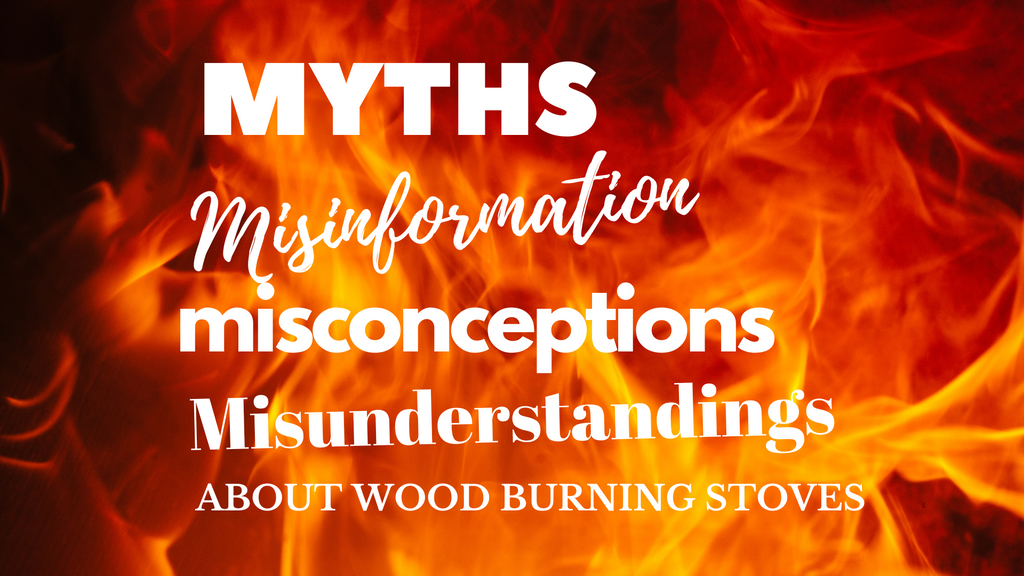Answers to Questions Regarding the Myths & Misinformation About Wood Burning Stoves

At a time of multiple global crises when thousands of people have been thrown into fuel poverty, wood-burning stoves are playing a vital role in helping families survive these troubled times. So, it’s wrong and dangerous for certain newspapers to misrepresent data to blanket criticise a heat source that is helping so many.
Updating open fires and old wood-burning stoves will make a massive difference to PM2.5 emissions. However, we ask you to take a closer look at the data which reveals that modern ultra-efficient stoves are a big part of that solution.
Defra's Clean Air Strategy says domestic combustion accounts for 38% of fine particulate matter. This number was based on a government survey in 2015 which over-estimated the amount of wood being burnt on stoves and fireplaces in the UK.
A much larger, independently verified survey of over 10,000 people carried out in 2019, showed the true figure was less than a third of what the government estimated, making the domestic combustion percentage just 13%, rather than 38%. This also ignored the fact that the new Ecodesign stoves produce 66% less emissions than Defra's estimations.
The domestic combustion figure also includes outside sources including bonfires, garden incinerators, outdoor pizza ovens and even wildfires! The true contribution of wood burning stoves is therefore relatively small.
Inside The Home
PM 2.5, or fine particulate matter, are microscopic particles or droplets present in the air that can be damaging to health when inhaled in sufficient quantity. The World Health Organisation (WHO) has established that the safe daily average limit for PM 2.5 in the environment should be ≤ 10 µg/m3 (1). As a point of reference, the air in Central London averages between 18-25 µg/m3.
A study conducted in the US in 2019 that featured in the Journal of Exposure Science & Environmental Epidemiology, examined 137 homes and found that the average daily level of PM 2.5 particulates in homes was 6-7 µg/m3 while those with a wood-stove was just a fraction more at 6-8 µg/m (2). A tiny difference that is well within the WHO safe level.
This doesn’t surprise us, as we know that a correctly functioning wood stove draws air, smoke and particulates out of a room and up the chimney. However, best wood-stove practices are vital in achieving these low levels and this is something that we are passionate about teaching our customers and other wood-stove users alike.
Outside The Home
Data has too often been twisted to bolster a blinkered argument. For example, comparing the emission rates between wood stoves and HGVs has caused much unnecessary concern. Claims that a wood-burning stove is worse than 750 HGVs make a good headline, but this is extremely misleading.
Closer inspection reveals that their data does not include the small particle emissions created from brake and engine wear and in fact, just one Euro 6 HGV (let alone 750) produces 13 times more PM2.5 emissions than an Ecodesign wood-burning stove over the course of a week’s real-world use. Furthermore, emissions from HGVs are emitted at ground level (nearer head height), whereas wood smoke is dispersed more safely, higher up via a chimney flue.
The SIA say,
"The claims are based on simplistic calculations using permitted rates of emission and do not consider either real world use or non-exhaust emissions. Furthermore, these permitted emissions rates rely on vastly differing measurement protocols and techniques. It should also be noted that there are several unreferenced assumptions, and the report does not appear to have been independently peer reviewed. "
Not all wood burning is the same
Another common error is to lump in modern efficient stoves with all other forms of domestic wood-burning, including open fires and outdoor bonfires which are far more polluting. However, a high-quality ClearSkies rated stove that is properly installed and serviced and is burning properly seasoned wood fuel, actually reduces emissions by up to 90% compared with an open fire and up to 80% compared with a 10 year old stove.
Additionally, logs that are sourced from properly managed woodland can be a sustainable practice that works in harmony with our forests. In fact, copsing is key for wildlife proliferation and the future of our woodlands.
When the UK government released its 2020 figures for PM emissions the data showed that the overall percentage of PM2.5 attributable to domestic indoor burning (including open fires and old stoves) was 17%. More importantly, it showed that modern Ecodesign compliant wood burning stoves were contributing just a tiny 1-2% to emissions.
Trusted Chief Medical Advisor Chris Whitty in his latest report acknowledges this saying, “For air pollution emissions, there is substantial difference between the different open fire and stove designs, the age of the appliance and how well maintained it is, and the moisture content of the wood, for those who want to burn wood.”
Therefore, a far more pragmatic and impactful approach to reducing PM 2.5 levels would be to target the significant percentage from open fires and old stoves by actively encouraging people to switch to modern Ecodesign ClearSkies rated wood-burning stoves and educating them on the importance of using the right fuel.


Comments on this post (0)